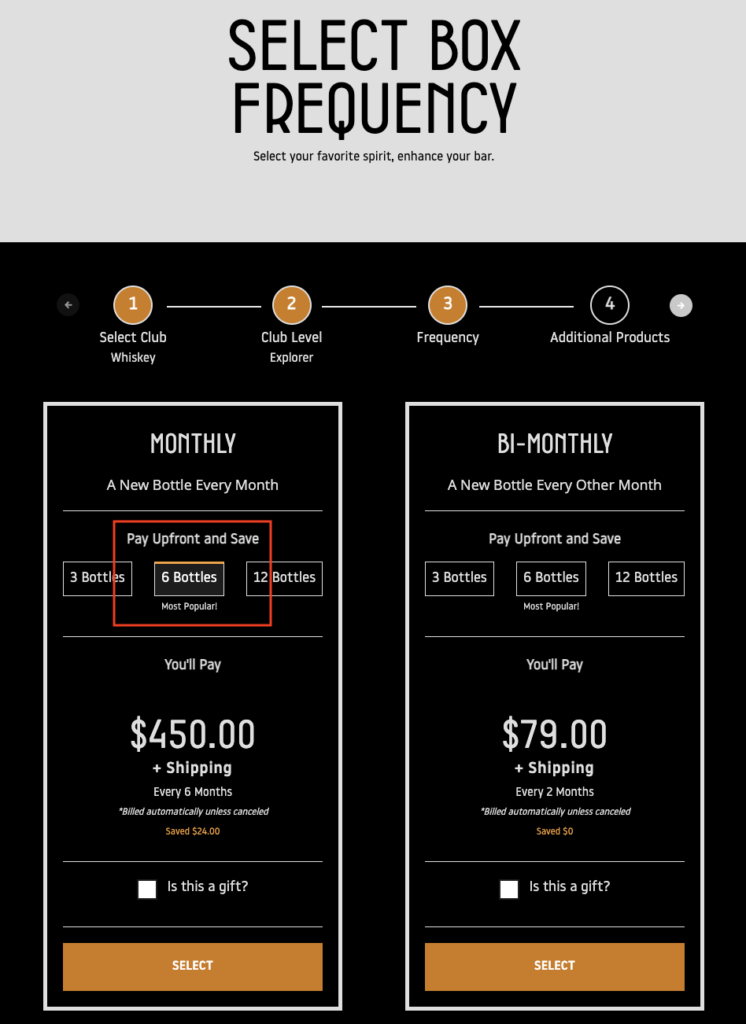If you’re reading this, you’re probably a U.S.-based merchant wading into publicly-traded territory (GO YOU!) or you’re simply looking to scale and recognize the importance (for your own sanity—and for most financiers) of consistent, ultra-tidy accounting.
Ahead, the basics of generally accepted accounting principles (GAAP): what it is, why it matters, implications for subscription brands (that’s a doozy), and more!
GAAP compliance 101
GAAP is a set of principles imposed by the Financial Accounting Standards Board (FASB) that standardizes accounting practices across industries. In other words, it’s a sort of ethical framework intended to keep your books uniform—not just within your business, but also in comparison to other merchants in your niche.
While many merchants are at liberty to legally flout GAAP, those who are publicly traded in the United States are required to adhere to its stringent standards.
Even if you aren’t planning to go public, it’s still a good idea to consider compliance. GAAP-compliant financial statements are highly preferred by investors and financial institutions, as the subsequent transparency and continuity allow them to make faster decisions, grounded in consistent historical data.
What’s more, compliance will make your life a lot easier when it comes to forecasting and strategy. You’ll have the most streamlined financial record possible, which you can use to analyze your business from year to year, see how you stack up to others, evade data misrepresentation (unintentional or otherwise!), and more easily detect internal fraud.
There are 10 precepts that govern GAAP compliance:
- Principle of Regularity: Accountants strictly adhere to established rules and regulations.
- Principle of Consistency: Consistent standards are applied throughout the financial reporting process.
- Principle of Sincerity: Accountants are committed to accuracy and impartiality.
- Principle of Permanence of Methods: Consistent procedures are used in the preparation of all financial reports.
- Principle of Non-Compensation: All aspects of an organization’s performance, whether positive or negative, are fully reported with no prospect of debt compensation.
- Principle of Prudence: Speculation does not influence the reporting of financial data.
- Principle of Continuity: Asset valuations assume the organization’s operations will continue.
- Principle of Periodicity: Reporting of revenues is divided by standard accounting periods, such as fiscal quarters or fiscal years.
- Principle of Materiality: Financial reports fully disclose the organization’s monetary situation.
- Principle of Utmost Good Faith: All involved parties are assumed to be acting honestly.
What if I don’t want to comply with GAAP?
If you’re not currently compliant, you’re probably reporting your financials using some kind of pro forma method. Pro forma literally means for the sake of form and doesn’t operate according to the rules of GAAP.
Pro forma financial statements are more or less hypothetical in that they take into account projected revenue and expenses and may exclude anything that a company deems to not reflect their normal (or expected) performance. These statements are perfectly suitable to internally navigate the state of your finances and to give the public a general idea of where your company stands.
Here’s where you can get into trouble: by nature, pro forma statements can be manipulated to highlight what a company wants potential investors to see and downplay or obscure less desirable trends. If any GAAP results are obscured in a statement, that’s considered data misrepresentation.
All of that said, if you aren’t planning to go public, you don’t predict needing outside financing, and you like your accounting the way it is, you’re completely within your rights to disregard GAAP and go on your merry way. Just know that you may need to provide reasons for doing so!
OK, OK, maybe I want to comply. How do I?
It’s a little complicated. The (quite…amorphous) principles listed above act as the foundation for actual standards set forth by FASB, which cover things like accounting methods, revenue recognition, balance sheet item classification, and more.
There are places where you can dive into GAAP-standardized accounting practices yourself (complete with lots of fun legal jargon!) but getting yourself a GAAP-educated accountant and some solid accounting software will give you the best shot at complete compliance.
You’ll also need to undergo regular audits, keep your financial team armed with continued education as standards evolve, and make sure you’re properly recognizing your revenue.
GAAP, revenue recognition, & accounting methods, oh my!
A key compliance point for GAAP is the accounting method a company uses, which really comes down to the way you recognize your revenue. There are two primary accounting methods—cash accounting and accrual accounting—and the latter is the only one recognized by GAAP standards.
So, what’s the difference between the two? Good question.
In cash accounting, revenue is recognized the moment cash changes hands. By contrast, accrual accounting recognizes revenue when it’s earned. Make sense? Um…
Right. I got you. Let’s illustrate:
Pour More is a spirit-of-the-month merchant offering prepaid and monthly subscriptions. Say a customer selects the Whiskey Club. The next step will be to choose the frequency with which they want their product delivered. Pour More offers a discount if you purchase all your bottles up front, so the customer selects the monthly, 6-bottle prepaid option.

Let’s pretend the customer placed their order in June. According to the cash accounting method, Pour More would recognize that $450 all at once, as June revenue. In accrual accounting, however, the income from that subscription would need to be recorded incrementally, each time a bottle is actually shipped. Instead of $450 in June, the revenue would be recognized as $75 at a time, over a period of 6 months.
Prepaid possibilities & the Shopify dilemma
As of late 2021, the average U.S. consumer had 5 retail subscriptions – double the number the same group had just a few months prior. It’s no secret that opportunities are ripe for the taking in the subscription market. Prepaids have risen in popularity in recent years and remain particularly attractive, for several reasons:
- They’re flexible. Regardless of your current pricing model, chances are very good you can offer a prepaid subscription option without changing a thing.
- They provide predictability. Prepaid subscriptions make it easier for you to forecast since it’s unusual to allow a customer to cancel a subscription mid-stream once they’ve prepaid. They also provide a definitive, set-it-and-forget-it situation for consumers, who may be particularly economically cautious right now. For example, nearly 80% of Millennials (who currently hold the lion’s share of buying power in the U.S.) are concerned about—and preparing for—an upcoming recession, creating budgets and getting their nest eggs in order. Prepaid subscriptions make it easier for them to responsibly justify fitting your products and services into their budget.
- They let you create a tailored experience. When your customer starts reaching the end of the line on their subscription, you get an opportunity to offer unique options for renewal, based on their past buying behavior. This is also a primo time to cross-sell and upsell them on other products and services they’re likely to enjoy.
The only problem (which can apply to standard subscription businesses, too—not just ones offering prepaids) is that neither Shopify nor Recharge currently offer a native solution that recognizes subscription revenue on an accrual basis. There are a bazillion accounting apps in the Shopify App Store, but none of them are a one-stop shop for harmoniously syncing Recharge subscriptions and Shopify fulfillments, then recording revenue only as it’s earned.
Well…until now.
Pekel: A Shopify x Recharge merchant’s GAAP-compliant dream
Developed by Tako Agency, Pekel is a fully automated, no-code app that helps subscription businesses on Shopify and Recharge recognize their revenue in a GAAP-compliant way.

How it works
On the first of each month, Pekel harmoniously syncs order data from Recharge and Shopify, matching each installment of a subscription to its unique Recharge subscription ID, then automatically formats and feeds that data into a downloadable CSV, which will automatically appear in your Pekel dashboard at the start of each month.
Information included in the CSV includes the Recharge subscription ID, Shopify order ID, customer email, item(s) shipped for each subscription, the fulfillment date, and—here’s the kicker—the divided totals of the cost of the merchandise, shipping, and tax.
“What does divided total even mean?”
Great question. Each time someone purchases a subscription through Recharge, a unique subscription ID is attached to it. Pekel automatically cross-references the number of items pre-purchased in a subscription with the total cost of the subscription and does the math to come up with the total cost of each shipment. That’s the number it loads into your monthly CSV.
To return to our Pour More example, let’s say a customer pre-purchases a 12-bottle subscription. The bottles will be delivered monthly. Here’s what the subscription looks like in Recharge:

With taxes and shipping, the customer paid $557.00 at checkout. Per accrual accounting rules, Pour More can’t recognize that $557 as November revenue. They can only recognize revenue for merchandise actually shipped in November—which is just one of the 12 bottles purchased.
This is where the magic happens. Pekel does its thing and divides that $557 by the number of bottles in the subscription to come up with the monthly revenue for that subscription. Here’s what it looks like if a Pekel user were to download their CSV and import it into Airtable:

Voila! The app has automatically divided the $540 subtotal (for the bottles themselves), the $17 shipping cost, and the $30.28 in taxes by 12 bottles to come up with the recognizable revenue for November for this subscription (and will repeat the process for subsequent months until all the bottles have been shipped).
Need a custom report? Pekel does that, too.
Just choose the date range containing the orders you want to see, then purchase your report. With just a couple of clicks, Pekel will format the data into a CSV, which you can download and import into your spreadsheet software of choice.
Pricing
Pekel pricing is usage-based, so you only pay for the number of orders you record in a given month. The cost per order for app subscribers is $0.08 per order*.
When you sign up, Pekel uses the Recharge API to retrieve your average orders per month over the past six months and provides an estimated monthly cost based on that average. The app will ask you to authorize a charge in excess of the estimate but will not charge you for more orders than are actually recorded.
If you exceed the number of orders authorized for a particular month, you will not be charged for the overage. Instead, upon your next login, the app will simply request that you authorize a higher amount to avoid exceeding the charge limit the following month.
*Custom reports are priced at $0.10 per order. Total cost depends on the number of orders in the date range you choose. Once integrated with your Recharge account, the app will automatically recognize the number of orders in your selected range and display the exact cost before you even purchase!
Pekel to the people
Remember our hypothetical Pour More example? Not so hypothetical! Pour More has been using Pekel since before its official inception. Here’s what they had to say:
“The Pekel app has been a game changer for our business. We can now pinpoint down to each shipment what has and hasn’t left the warehouse, what should and should not be recognized as income, as well as the exact dollar amount of our future liability sales. For anyone who has a good part of their business in prepaid sales, this is a fantastic add-on.”
–Pour More team
GAAP compliance with subscriptions can be hell, but it doesn’t have to be. With a GAAP-savvy accountant, the right tools, and a little due diligence, you’ll be well on your way to sweet, standardized heaven.
Questions about Pekel? Hit us up anytime at [email protected].
GUEST AUTHOR:
Emma Cloutier is the COO and Content Manager at Tako Agency—a full-service Shopify agency catering to some of the fastest-growing brands on the planet. In her off time, you’ll find Emma catching miles in her running shoes or under a plate of pasta, watching Succession with her cat, Pawblo.

Sources
[1] What financing options are available for Shopify merchants? (Tako Agency)
[2] GAAP: Understanding It and the 10 Key Principles (Investopedia)
[3] What are GAAP Internal Controls? (Reciprocity)
[4] What Is GAAP? (Accounting.com)
[5] GAAP vs. Non-GAAP: What's the Difference? (Investopedia)
[6] The importance of cross-selling & upselling for subscription brands (Recharge)



